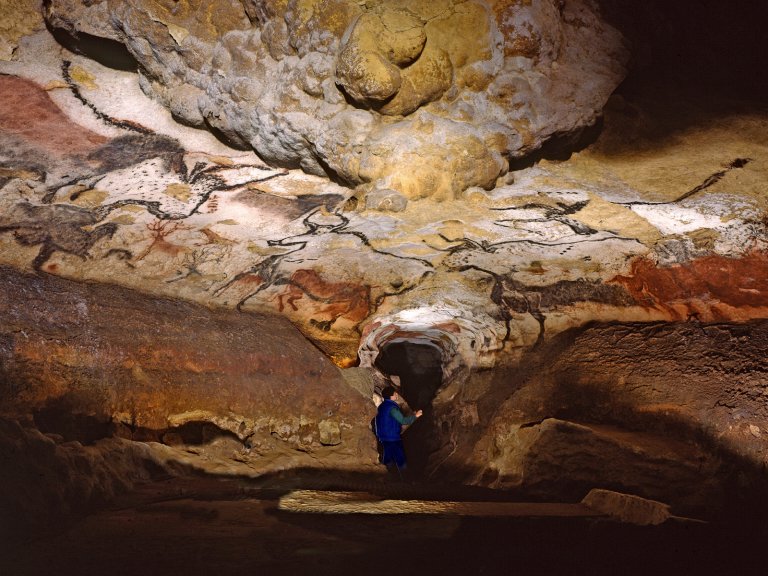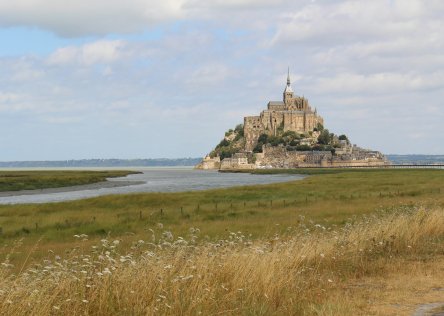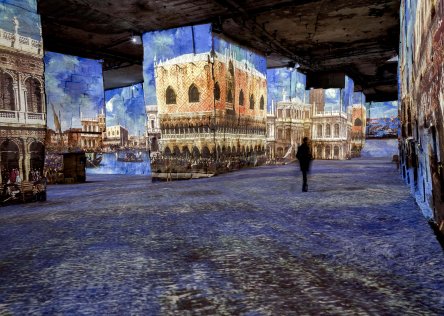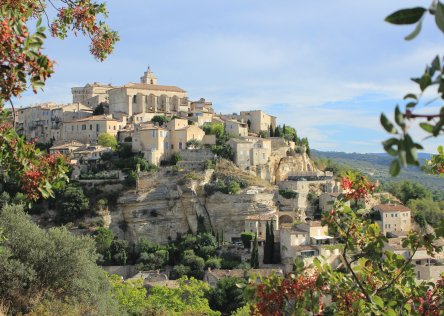On September 8th 1940, the world was at war and 18-year-old Marcel Ravidat was out walking his dog in a clearing in the region of Lascaux, Dordogne. Suddenly, his dog disappeared.
Marcel starting calling out to him, and he eventually found him emerging from a hole in the ground that had been revealed by a tree that had fallen down the year before. Marcel tossed some stones down the hole and listened as they bounced and descended deeper and deeper into an apparent underground abyss. Curiouser and curiouser. Marcel had a feeling he had just stumbled upon something extraordinary.
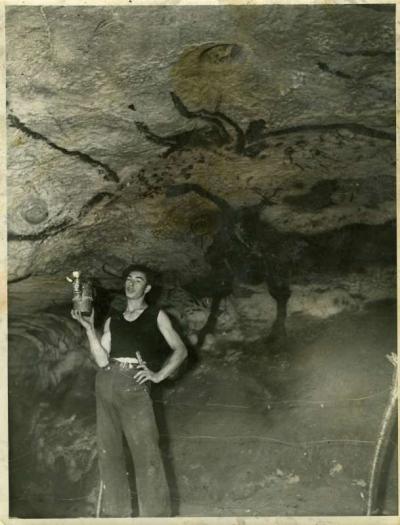
Marcel Ravidat under the big bull in 1940
It was only four days later when he returned with some friends that they slid down the hole (hoping to find buried treasure!) and discovered an astounding collection of prehistoric cave paintings. The underground cave at Lascaux was dubbed by Abbé Breuil, the first archeological expert to examine the walls, as the “Sistine chapel of prehistory”. The cave walls were covered with images that included a wounded man, galloping horses, charging bulls, and deer with antlers depicted in the most stunning detail.

Abbé Henri Breuil 1877-1961
After the Second World War, the cave was opened to the public and was receiving up to 1,200 visitors a day until it was permanently closed in 1963, as moisture and carbon dioxide had started to damage the paintings. The first replica of the cave, known as Lascaux 2, opened in 1983, while Lascaux 3 is an 8,600 square feet mobile exhibition which has been touring the globe since 2012.
VISIT PREHISTORIC CAVES IN DORDOGNE WITH FRANCE JUST FOR YOU
While Lascaux 4 is the greatest and largest reproduction of cave art in the world, we also like to take our travelers to other caves where they will have the opportunity to see original paintings and drawings. It won’t last for long as caves are gradually closing to public to protect the paintings from carbon dioxide. Standing in front of a horse which was drawn 20,000 years ago is a very unique experience which leave you with goose bumps!
For travelers interested in prehistorical times, we have visited all the caves in Dordogne and will be happy to make recommendations based on what YOU are looking for.
We are very happy to incorporate a trip to prehistoric caves including Lascaux into any of our Dordogne itineraries.
Lascaux 4: The International Center for Cave Art
On December 15th 2016, less than a mile away from Lascaux 2, the International Center for Cave Art (also known as Lascaux 4) opened to the public. This full-scale reproduction took three and half years to complete and is the largest and most high-tech replica of the original Lascaux caves. Around 50 artists and sculptors participated in its construction, reproducing 600 images of animals and 400 symbols. Lascaux 2, while impressive in itself, did not include any engravings and only recreated 40% of the cave. Lascaux 4 has reproduced every last detail.
The guided tour of Lascaux 4 begins on the roof, which is covered with vegetation and overlooks the region of Montignac. Visitors are then transported back 20,000 years to the Magdalenian period as they watch a short film about the animals that inhabited the region during that period, and a depiction of the early homo sapien preparing the pigments for the cave paintings.
The tour then takes visitors outside again, and a soundtrack of Marcel Ravidat whistling for his lost dog helps to recreate the scene of the discovery in 1940. Back inside, visitors find themselves staring up at the hole that the teenage boys slid down as they imagined the chamber of secret treasures they might find below.
Experts have gone to great lengths to make this experience as authentic as possible; beyond the exact replicas of the cave paintings, Lascaux 4 has the same temperature, air pressure, smell of damp and sounds as the original cave. You will have a handheld digital ‘companion’ which will guide you through the center, but these will not work in the cave itself, as it is intended to be a place of contemplation and discovery.
In the workshop that follows the cave, the most impressive sections of the cave have been recreated once again and suspended from the ceiling. Here you will also see displays of archives and photographs from the original cave.
Beyond this, the center offers multimedia shows about cave art, a 3D film about Lascaux and other caves around the world, and a ‘Gallery of the Imagination’, a digital cave of floating interactive touch-screens. Visitors are invited to create their own art on these screens by combining elements of modern art and cave art. These images are projected around the room, and you will be able to find your masterpiece on the Lascaux website after your visit.
